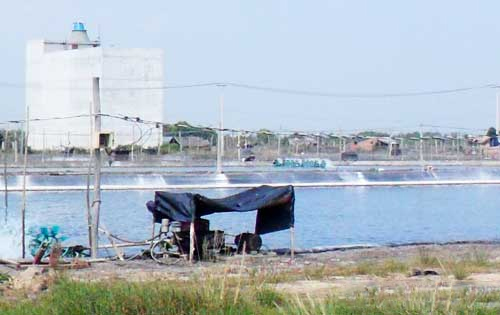Water treatment and water in grow-out shrimp ponds and settling ponds
Step 1: Get water into ponds through filter bags made with thick fabric to remove rubbish, larvae, shrimps, crabs, snails, insects, or small fish. Stabilize the ponds in 3-7 days.
Step 2: Run paddle wheel aerators continuously in 2-3 days to stimulate eggs of shrimp, snails, insects, small fish hatch into larvae.
Step 3: Kill harmful organisms, sterilize water in settling ponds in the morning (at around 8 A.M.) or the afternoon (16 P.M.) with chlorine with a concentration of 20-30 ppm (20-30kg/1.000m3 of water), or those chemicals allowed to be used in India (not plant protection products and illegal substances).
Step 4: Developing Plonkton by adding organic sources like Jagary,Ricebran.
Step 5:Check pH regularly(morning and evening) and ensure less pH fluctuation
Step 6:Stock after getting good bloom




